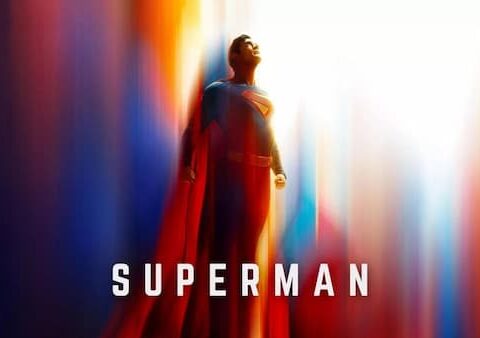Having been really impressed by the first several months of the initial Darth Vader title Marvel/Disney launched a few years back (old review here), I was quite pleased to see a new Darth Vader series being reset to a new start-point.
This was simply because I had lost track of the previous title for various reasons and wanted to continue reading Vader-centered stories without having to track-back through many months of missed material.
Darth Vader #1 opens more powerfully than I had ever expected it would.
‘The Chosen One, Part One’ opens right in the midst of the familiar scene from Revenge of the Sith in which Anakin has just been put into the Vader suit and has been told by Palpatine that Padme is dead.
What we get here is additional material that we understand to have been ‘missing’ from the film version.
So we don’t just see Vader reacting in anguish to Padme’s death, but we see Palpatine/Sidious relishing the situation, almost taunting him over her death. We then see the Emperor attack his new apprentice, unleashing Sith lightning on him and drawing his red lightsaber.
This is perhaps the most cruel we’ve ever seen Palpatine – and that’s saying something.
The genius of Darth Vader #1 is its placement in the timeline: starting this story right at the end of Revenge of the Sith and the prequel era was a superb writing choice. We are literally just coming out of ROTS and immediately continuing the story, filling in blanks. I have always wondered what went on immediately after the events of ROTS – and particularly Vader being out into the suit – and I’ve always felt a whole novel devoted purely to the days, weeks or months after ROTS‘s ending would be awesome.
The scene of Mas Amedda addressing a crowd from the steps of the Jedi Temple is brilliant. With the imperial insignia flags raised behind him (in a scene reminiscent of Hux’s First Order Nazi rally in The Force Awakens), we see him conducting this massive public display to consolidate Palpatine’s public standing as Emperor and his lie (from Revenge of the Sith) that the Jedi had tried to overthrow the Republic and that he, Palpatine, had stopped them.
These are the kinds of scenes and sequences I live for, as far as Star Wars expanded universe material is concerned. These sequences – both the Vader/Palpatine scene and the Amedda/Coruscant scene – are perfect and both should be a joy for any fan with a deep attachment to the saga in general and the prequel era in particular.
This period in the timeline – inbetween the end of ROTS and the approach towards the Original Trilogy era – is a period that really needs to be more explored and developed like this.
What’s also great about the Mas Amedda scene is the sense of how dictatorships work, especially in their early days. They have to quickly establish their founding myths – and within those founding myths there needs to be an inherent justification for the dictatorship.
In this instance, it rests on convincing the public that the Jedi were traitors engaged in a coup and that the Emperor and the Empire have restored ‘freedom’ to the galaxy (as was already established in dialogue in ROTS).
This is all great stuff.

Charles Soulle’s writing also does a good job of probing into both the Vader/Palpatine relationship and Vader’s own inner torture.
This book gives us a really good sense of both how confused, tortured and damaged Vader/Anakin is after being put into the suit and how ruthlessly and cruelly Palpatine psychologically tortures him in order to make him more and more strong in the Dark Side.
The total lack of compassion from Palpatine after Vader learns of Padme’s death is disquieting to read – even though we know how evil Palpatine is. This is also even more interesting if we consider the theory – which I very much subscribe to – that there was no “broken heart” death of Padme, but that Palpatine killed her through the Force in order to channel her life force into keeping Anakin alive in his new identity.
At the psychological core of this story is Palpatine’s goading Anakin/Vader into accepting or embracing his pain and weaponising it. By the time of Return of the Jedi, we knew that Vader was essentially a tortured soul whose dark deeds were driven by his pain and anger. But what we see here is how much Palpatine wants that pain in Vader, because it is what ensures his immersion in the Dark Side.
This is also why I subscribe to the view that Palpatine killed Padme – he needed Padme dead in order to complete Anakin/Vader’s torture.
Padme being alive would always threaten to draw Anakin back from the Dark Side. But with Padme gone – and with Palpatine having implanted the (probable) lie that Vader killed her himself – Vader has no one and nowhere to turn to accept to submit wholly to the Emperor.
In all, Darth Vader #1 is a brilliant, brilliant opening chapter that hits all the right notes – including notes I never expected it to even aim for. It works brilliantly as an immediate follow-on from Revenge of the Sith.
If there’s one slight weakness to it, it’s the fact that – despite David Curiel’s good colors throughout – neither Palpatine or Vader are particularly well drawn in this book. They just don’t look enough like their characters should, in my opinion; even though most of the overall artwork is of a strong quality.
But with a story this good, presented this well, I’m not going to linger on such a relatively minor nitpick.
Darth Vader #2 is marginally less interesting, but still manages to play with some good ideas. The highlight of this book is seeing a squad of Clone Troopers having to go up against Vader, without knowing who or what Vader is. Clearly they have no idea this is Anakin Skywalker.
What’s particularly interesting here is the brief insight into the concerns of the Clones after Revenge of the Sith – specifically that, after Order 66, their usefulness to Palpatine might be about to run out. We see Clones here refer to rumours that the Emperor is shutting down the clone factories on Kamino and that there will be no more Jango clones.
What I love about this little sequence is the casual banter vibe to it: yet the clones seem to realise or suspect that their time is almost over and that they are going to be replaced by normal human conscripts who will serve as the Empire’s foot soldiers.
Again, it’s little details like this that help to bridge the gap in our minds concerning the immediate post-ROTS era. Which is fun.
We also get a lot of discussion of Order 66 and the idea that the Clone Troopers know they didn’t execute every single Jedi. Specifically, Vader – who is under orders from the Emperor to find a surviving Jedi and claim his lightsaber crystal by theft – discovers the location of a particular Jedi who had taken the ‘Barash Vow’ that had removed him from active service to the Jedi Order. This gives us some new elements to the Jedi Order or prequel era mythology, which is good.
Darth Vader #3 and #4 are taken up entirely by the fight between Vader and a previously unknown Jedi in exile – Master Kirak Infil’a. While less engaging than the previous issues, it’s still interesting enough to hold one’s attention throughout the book.
Darth Vader #5 is a stronger chapter, detailing the birth, so to speak, of Vader’s red lightsaber and the trial he has to undertake in order to earn it.
This issue delves nicely again into the Vader/Palpatine relationship. The most interesting element here is the insight into Anakin/Vader’s own inner struggle, as we see him – deep in his psyche – playing out an alternate path in which he contemplates reconciliation of sorts with Obi-Wan and attacking the Emperor. Though this is – obviously – only a contemplation, the sequence of Vader attacking and killing the Emperor offers us a briefly satisfying glimpse of how things could’ve and probably should’ve gone in ROTS.
Alas, Anakin knows it is too late for all that – and that he must resign himself fully to his fate as Palpatine’s apprentice. Darth Vader #5 is an engaging read. It also offers treats for prequel lovers in particular, such as a return to Mustafar.
Darth Vader #6 will enthuse prequel lovers even more and is possibly the strongest chapter yet. It will also particularly please fans of Disney’s Star Wars: Rebels show, as this issue gives us a confrontation between Vader and the Grand Inquisitor. As usual, Palpatine is playing games and pitting his own servants against each other.
What particularly pleases about Darth Vader #6 is its grounding in the prequel era, particularly with most of this book being set amid the familiar sights of the Jedi Temple (which now belongs of course to the Emperor). The fact that the Vader/Inquisitor fight occurs amid the familiar setting of the Jedi library is a wonderful touch.
It’s funny, thinking about it, that this location only appeared once (and only briefly) in the entire cinematic saga (a sole Obi-Wan scene in Attack of the Clones) and yet feels so iconic.
Aside from introducing the Inquisitor and his recruits, this chapter reestablishes the fact that Palpatine knows there are Jedi survivors scattered about the galaxy and he wants to neutralise them. The book ends on a lone image of an unnamed figure who I assume (at this stage) is Jocasta – the Jedi Temple archivist who we know from the same aforementioned Obi-Wan scene in Attack of the Clones.
This promises more saga-grounded storytelling developments to come.
The opening sequence of Vader in his bacta tank as Palpatine intrudes on his privacy and continues to goad him is also a suitably moody, compelling way to start.
Darth Vader #6 is a terrific read for any Star Wars fan, but particularly for prequel fans or for Rebels enthusiasts.
Darth Vader as a monthly comic-book series continues to be the standard-bearer for all of the Star Wars books. No doubt in part because it is the darkest and most tortured and therefore usually the most compelling.
Having Charles Soulle (he has been so much a part of some of the best comic books in the last few years – the all-too-brief All-New Inhumans series being a great example) on writing duty also ensures a certain quality level.




